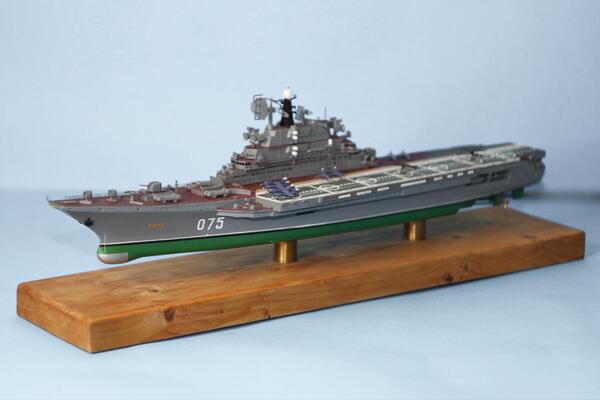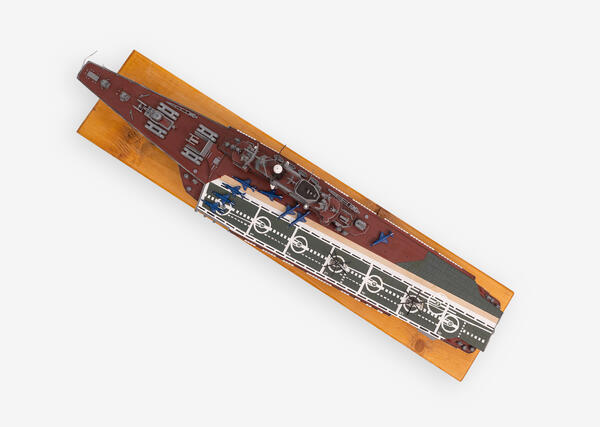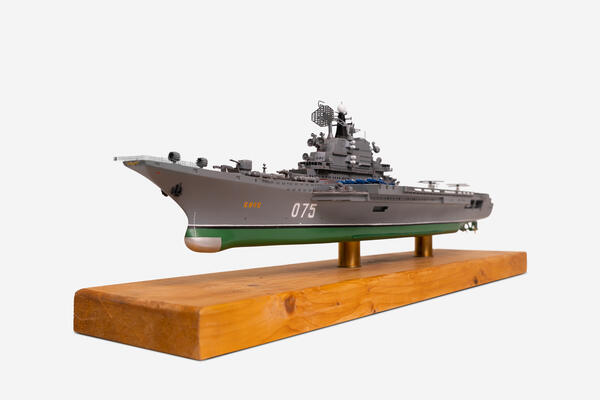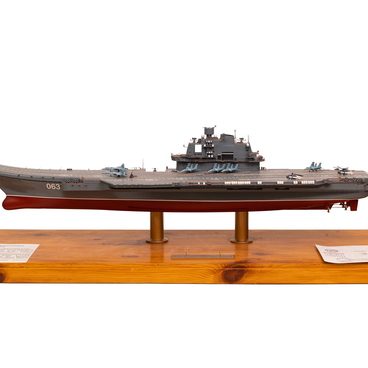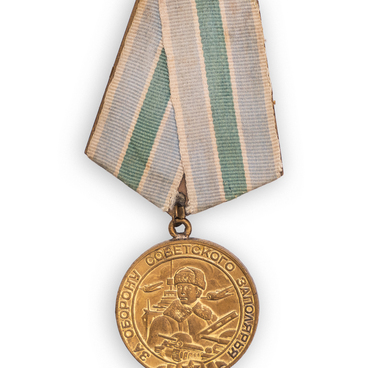The Red Banner heavy aircraft carrier “Kiev” was a symbol of the Northern Fleet of the USSR. This was the leading ship of Project 1143, a series of Soviet multipurpose missile-guided cruisers. These cruisers had a powerful weapon system and a small but effective air group, which made them an important part in the fight for naval supremacy. Until the collapse of the Soviet Union in 1991, these ships took an active part in combat operations and provided security and protection of maritime borders.
The construction of the Kiev cruiser began at the Black Sea Shipyard in the city of Nikolayev (Mykolaiv). This project required a major modernization of the plant itself, including the construction of new outfitting quays, deep dredging and the creation of new production facilities and infrastructure. The plant’s experts developed new technologies and methods to manage construction of such a large and complex ship. A life-size mock-up of a ship compartment with a section of the flight deck was made at the Black Sea Shipyard. It was subsequently used to equip a test stand at the Flight Research Institute in the town of Zhukovsky.
Laid down on July 21, 1970, the Kiev cruiser was launched on December 26, 1972. After the launch, the ship was taken to the plant’s outfitting quay to complete construction. Over the following years, comprehensive tests were carried out, including outfitting tests of various systems and sea trials on open water. On April 15, 1975, the naval flag of the USSR was raised over the ship, which indicated her readiness for combat service. On April 17, 1975, the cruiser headed to Sevastopol for sea trials.
The ship was homeported at Severomorsk Naval
Station. From 1976 to 1982, the heavy aircraft carrier Kiev conducted
operations in the Atlantic and in the Mediterranean Sea. In the early 1990s,
several fires broke onboard the cruiser. Kiev’s long-range trips continued
until the end of 1991, after which the operations were put on hold. In 1993,
the cruiser was decommissioned, disarmed and sold. As a result, she ended up in
the Chinese port of Tianjin, where she was refitted and turned into a museum
ship.

